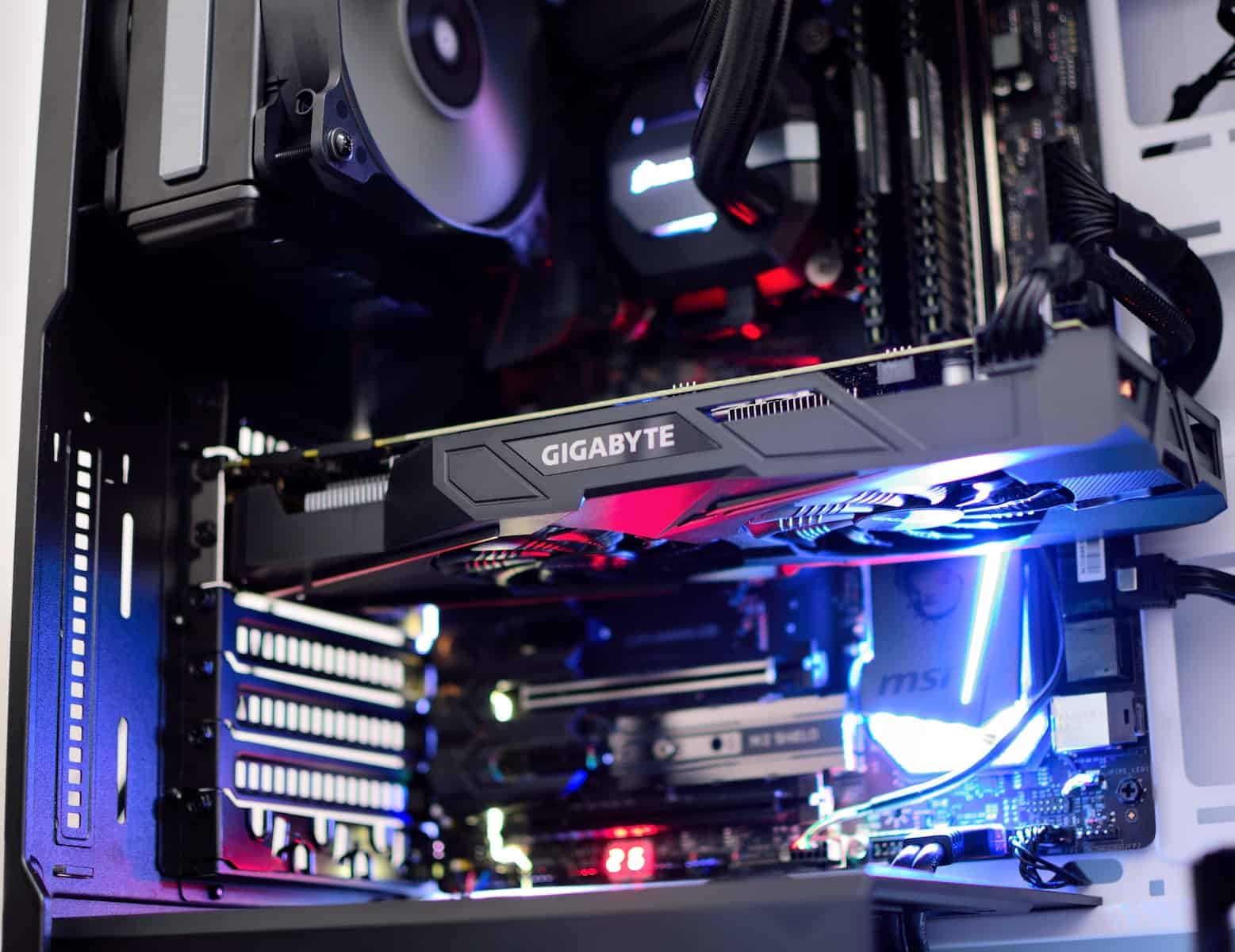If your computer is not working well or you’re having display problems, one simple fix you can try is reseating your GPU. This means taking the graphics card out of the motherboard and then putting it back in to make sure it’s connected properly. This can help fix issues like a black screen or crashes when your computer is doing a lot of work. To do this, make sure your computer is turned off and unplugged. Open the computer carefully and follow step-by-step instructions to remove and reinsert the GPU. This can help keep your computer working well without having to spend money on repairs.
Reseating Your GPU: A Guide

Preparation and Safety
Before you start, turn off your computer and unplug it from the power source. This is crucial to avoid electrical shocks or damage to the components. Wait a few minutes for any residual charge to dissipate. Ground yourself by touching a metal object to discharge static electricity, which can harm sensitive electronics.
Opening the Computer Case
Locate the screws on the back of your computer case and use a screwdriver to remove them. Slide off the side panel to access the internal components. If you’re unsure, consult your computer’s manual for guidance.
Locating and Removing the GPU
Find your GPU on the motherboard. It’s usually a large card with one or more fans attached. Gently remove the screw securing the GPU to the case. Press down on the release lever at the end of the PCIe slot, where the GPU is inserted. Carefully pull out the GPU from the slot.
Inspecting the GPU and PCIe Slot

Check the gold contacts on the GPU and the PCIe slot for any dust, debris, or bent pins. Use compressed air to blow away any dust and a soft cloth to gently clean the contacts. If you see any bent pins, try to straighten them carefully with a pair of tweezers.
Reseating the GPU
Align the GPU with the PCIe slot and gently push it in until you hear a click, indicating it’s securely in place. Screw the GPU back into the case. Slide the side panel back on and secure it with the screws.

Reconnecting and Testing
Plug your computer back into the power source and turn it on. If everything went smoothly, your computer should boot up normally. Check if the GPU is recognized by your system by opening the Device Manager or a similar tool.
Troubleshooting Tips
If your computer doesn’t boot up or the GPU isn’t recognized, double-check all connections and ensure the GPU is properly seated in the PCIe slot. Try reseating the GPU again. If the issue persists, consult your computer’s manual or seek help from a qualified technician.
Table of Reseating Steps
| Step | Action |
|---|---|
| 1 | Turn off and unplug the computer |
| 2 | Ground yourself |
| 3 | Open the computer case |
| 4 | Locate and remove the GPU |
| 5 | Inspect the GPU and PCIe slot |
| 6 | Reseat the GPU |
| 7 | Reconnect and test |
Key Takeaways
- Reseating a GPU can fix performance issues and crashes.
- Ensure the computer is off and unplugged before opening the case.
- Properly reconnect the GPU to maintain optimal performance.
Preparing for GPU Reseating
Before reseating a GPU, it’s important to follow safety measures, recognize common GPU issues, and gather the necessary tools. These steps will ensure a smoother and safer reseating process.
Safety and Precautions
Start by shutting down the computer and unplugging it from the power supply. This prevents any electrical shock. To avoid damaging the hardware with static electricity, an anti-static wrist strap should be worn. Attach it to a metal part of the computer case.
Handle the GPU carefully. Hold it by the edges to avoid touching the components on the board. Make sure the workspace is clean and free of dust to prevent any particles from getting inside the computer.
Using a grounded mat can also help minimize static discharge risks. These basic precautions will protect the equipment and the user during the process.
Identifying Common GPU Issues
Common GPU problems include display issues like black screens, glitches, or blue screens. Performance issues such as freezing and unresponsive screens can also indicate the need for reseating.
Overheating and high GPU temperatures are other signs. When the GPU overheats, it may throttle performance to cool down. This can cause slowdowns. Dust inside the computer can block airflow and worsen overheating.
Drivers can also play a role. A failed or outdated driver might cause display problems. Understanding these issues can help determine if reseating is necessary.
Tools and Materials Needed
Having the right tools makes reseating easier. You’ll need a Phillips head screwdriver to remove screws from the case and the GPU itself. An anti-static wrist strap is important for safety.
A cleaning cloth and compressed air can be used to clean the GPU and the surrounding area. If thermal paste is needed, have it on hand to ensure proper thermal conductivity. Also, check that all power cables and connectors are available for reattachment.
Ensuring these materials are ready helps to complete the reseating efficiently and effectively.
Frequently Asked Questions
This section addresses common questions about reseating a GPU. It covers the steps, symptoms, precautions, and potential issues related to reseating a graphics card.
What steps are involved in removing and reinstalling a graphics card?
First, turn off the computer and unplug it. Open the case and locate the GPU. Unscrew the GPU and unlock the PCI slot. Gently remove the card. To reinstall, align the card with the PCI slot and press it in firmly. Secure the card with screws.
What symptoms indicate that a GPU may not be properly seated?
Symptoms include screen flickering, no display, or graphical artifacts. The system may also fail to boot or detect the GPU. These issues suggest the GPU might not be properly seated.
Can reseating a GPU affect its performance or resolve issues?
Yes, reseating can improve performance or fix issues like display problems or system crashes. Ensuring a proper seat allows for better connectivity and stability.
What precautions should be taken when reseating a RAM or GPU?
Always ground yourself to prevent static discharge. Handle components by the edges, not the circuits. Avoid using excessive force when inserting or removing components. This helps protect sensitive parts.
How does one ensure a GPU is seated correctly in the motherboard slot?
Listen for a click and make sure the locking mechanism engages. Check that the card is level and the gold contacts are fully inserted. Screws should be tight but not overly so.
What could cause the need for frequent reseating of a GPU?
Frequent reseating might be due to loose screws, a damaged PCI slot, or a faulty card. Environmental factors like heat expansion can also cause loosening. Checking these variables can help identify the root cause.





